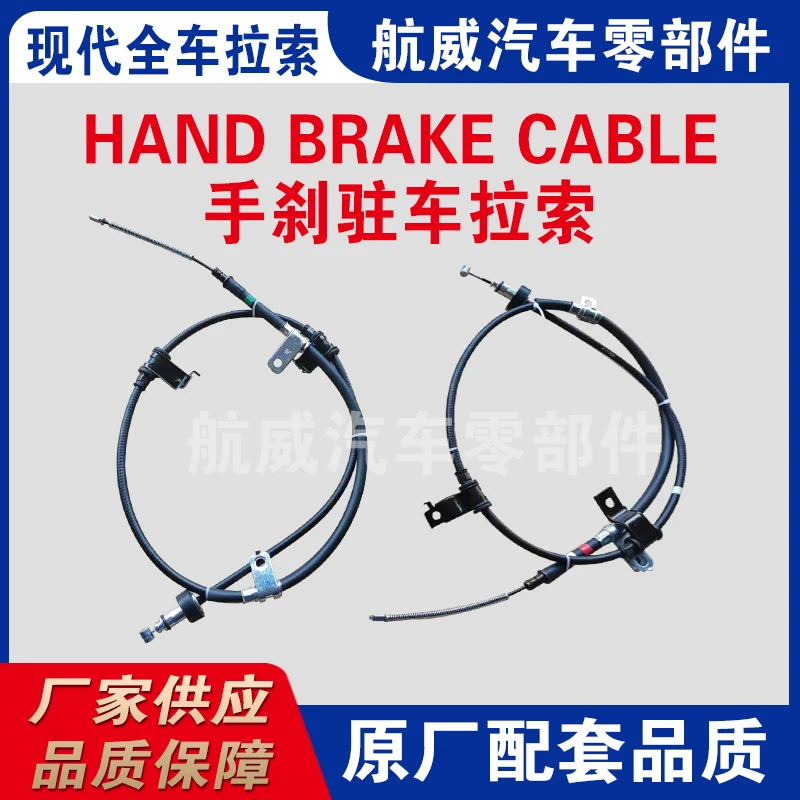car hand brake cable
Understanding the Car Hand Brake Cable Function, Importance, and Maintenance
The hand brake, also known as the emergency brake or parking brake, is a crucial component of any vehicle, ensuring safety and stability when parked. One of the key elements that make this system work is the hand brake cable. This article delves into the function, importance, maintenance, and common issues related to the car hand brake cable.
What is a Hand Brake Cable?
The hand brake cable is a metal wire that connects the hand brake lever inside the vehicle to the brake mechanism at the rear wheels. The primary role of this cable is to transmit the force applied by the driver when pulling up the hand brake lever, thereby engaging the rear brakes and preventing the car from rolling. Most vehicles come equipped with either a single cable system or a dual cable system, depending on the design and complexity of the hand brake mechanism.
Function of the Hand Brake Cable
When the driver pulls the hand brake lever, the cable tightens and pulls on the brake shoes or pads at the rear of the vehicle. This action locks the rear wheels in place, allowing the vehicle to remain stationary, especially on inclines. Unlike the foot brake, which uses hydraulic pressure to activate the brakes, the hand brake operates through a simple mechanical system. This distinct function makes the hand brake cable significant in emergency situations where the regular braking system may fail.
Importance of the Hand Brake Cable
The hand brake cable plays an essential role in ensuring the safety of a parked vehicle. Inadequate performance or failure of this cable can lead to serious consequences, such as unintentional rolling of the vehicle, which may result in accidents or damage to property. Furthermore, during unexpected situations where the main braking system loses pressure or fails, the hand brake can provide an additional layer of security by engaging the rear brakes.
Additionally, the hand brake cable can be an effective tool for performance driving techniques, such as drifting, where precise control of the rear wheels is required. Thus, the significance of a well-functioning hand brake cable extends beyond mere parking convenience; it is a vital component of overall vehicle safety and performance.
Maintenance of the Hand Brake Cable
Regular maintenance of the hand brake cable is essential to ensure its longevity and functionality. Here are some steps to consider
1. Inspection Regularly check the hand brake cable for signs of wear, fraying, or corrosion. Look for any obstructions that may hinder its movement.
car hand brake cable

2. Adjustment Hand brake cables may stretch over time, leading to decreased effectiveness. Many modern vehicles come with an adjustment mechanism, often located under the hand brake lever or at the rear brakes. It is advisable to adjust the cable as needed to maintain optimal tension.
3. Lubrication Applying a suitable lubricant to the cable can help reduce friction and prevent wear. Ensure that the lubricant used is appropriate for automotive cables.
4. Replacement If the cable shows significant wear or damage, it is crucial to replace it promptly. A damaged cable can lead to failure of the hand brake system, compromising vehicle safety.
Common Issues with Hand Brake Cables
Several issues may arise with the hand brake cable, among them
1. Cable Stretch Over time, cables may stretch, decreasing their effectiveness. This can typically be rectified with adjustments.
2. Rust and Corrosion Exposure to moisture and road salt can cause cables to rust and corrode, which can weaken them and affect performance.
3. Binding or Jamming Dirt and debris can accumulate within the cable housing, causing it to bind. This can lead to a failure in operating the hand brake effectively.
4. Disconnection In some cases, the cable may disconnect from the hand brake lever or the brakes themselves, often due to wear or improper installation.
Conclusion
The hand brake cable is an integral part of vehicle safety, ensuring that cars remain stationary and providing an additional braking mechanism when needed. Understanding its function, maintaining it properly, and aware of potential issues can save drivers from unfortunate accidents and enhance their overall driving experience. Regular checks and maintenance are simple yet effective ways to ensure your vehicle’s hand brake system operates reliably, safeguarding you and others on the road.
-
Upgrade Your Vehicle with High-Quality Handbrake CablesNewsNov.01,2024
-
Optimize Your Bike's Performance with Quality CablesNewsNov.01,2024
-
Enhance Your Vehicle's Performance with Quality Clutch ComponentsNewsNov.01,2024
-
Elevate Your Vehicle's Performance with Quality Throttle CablesNewsNov.01,2024
-
Elevate Your Vehicle's Performance with Quality CablesNewsNov.01,2024
-
Affordable Solutions for Your Cable NeedsNewsNov.01,2024
